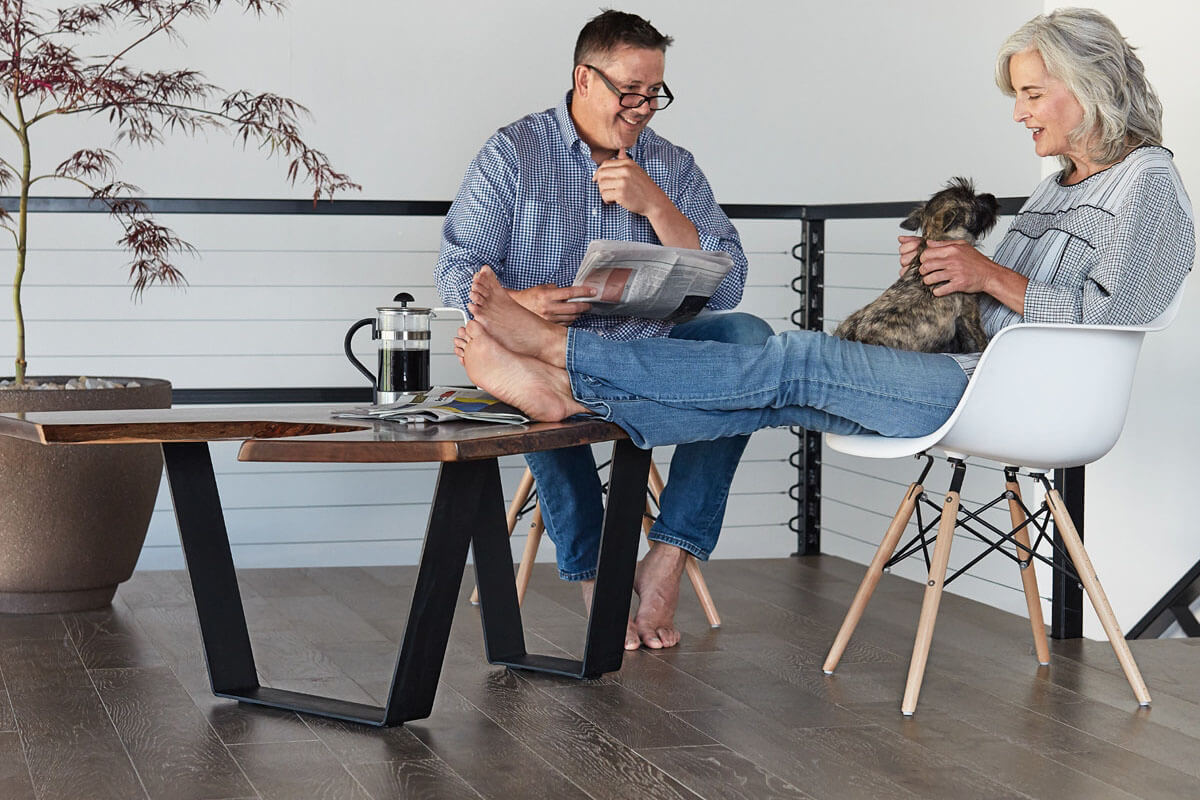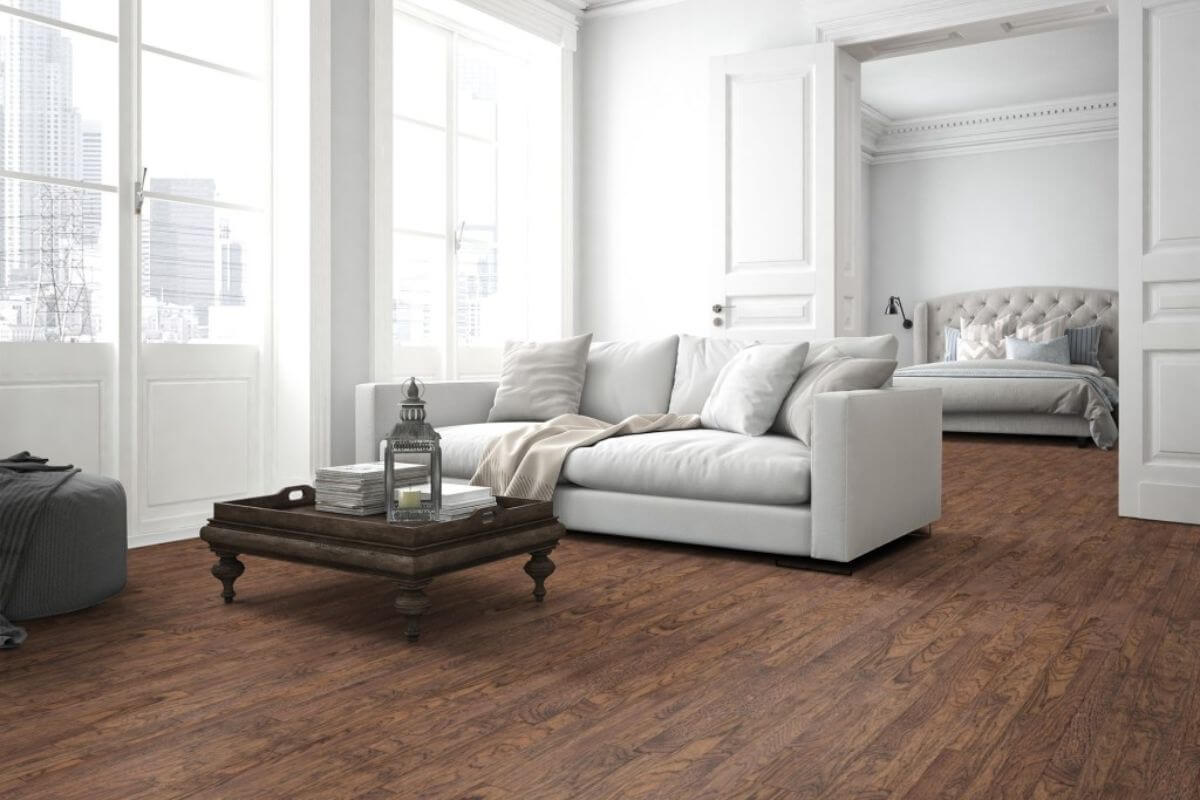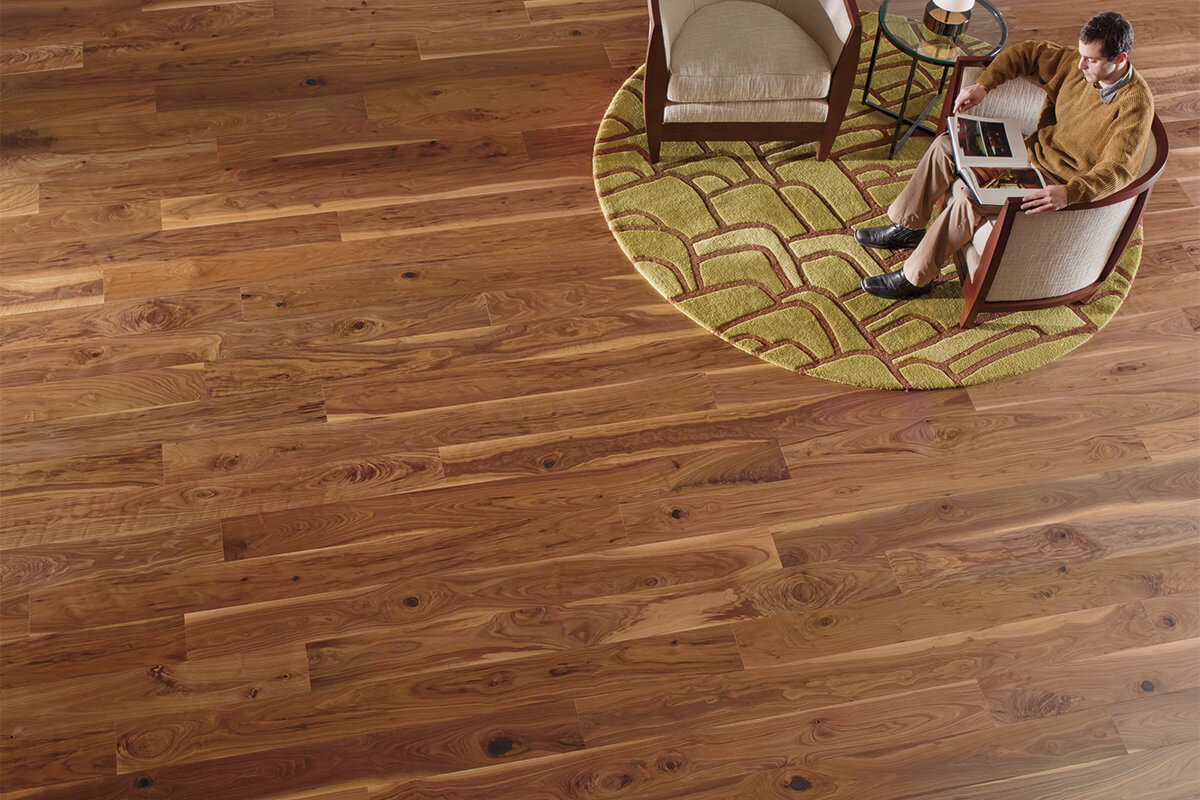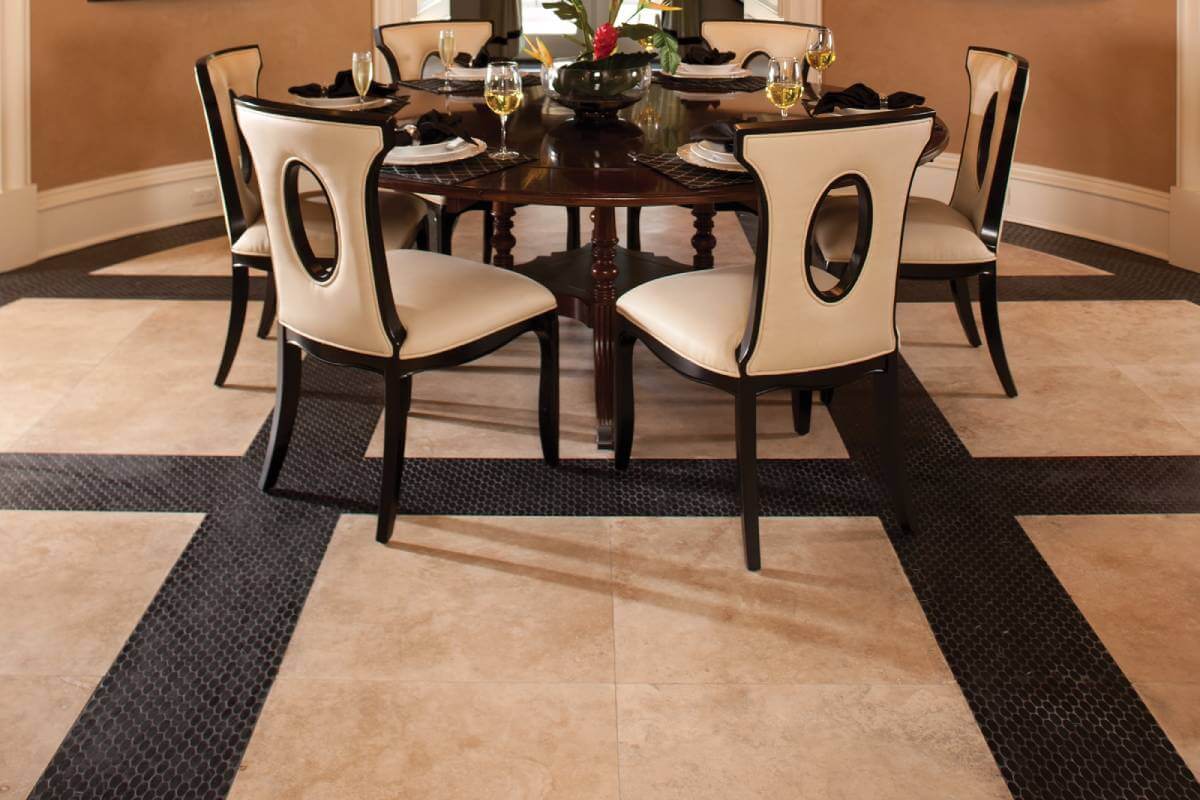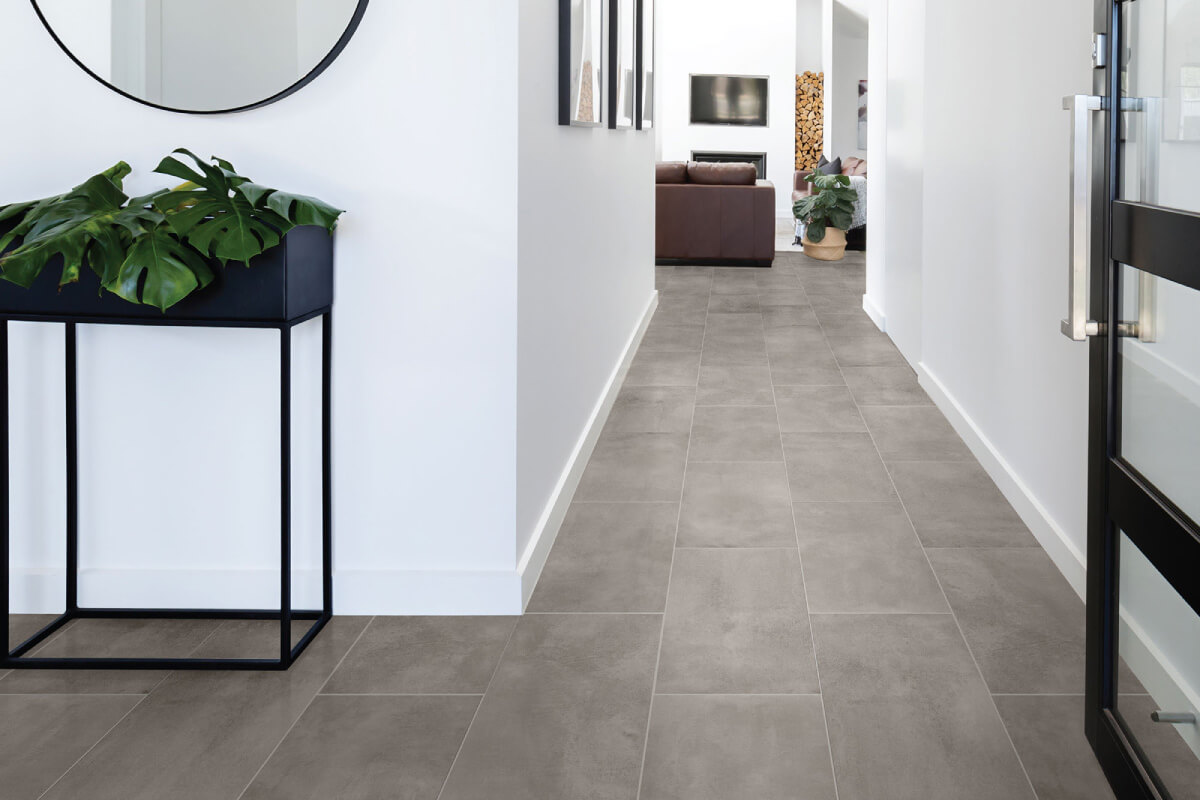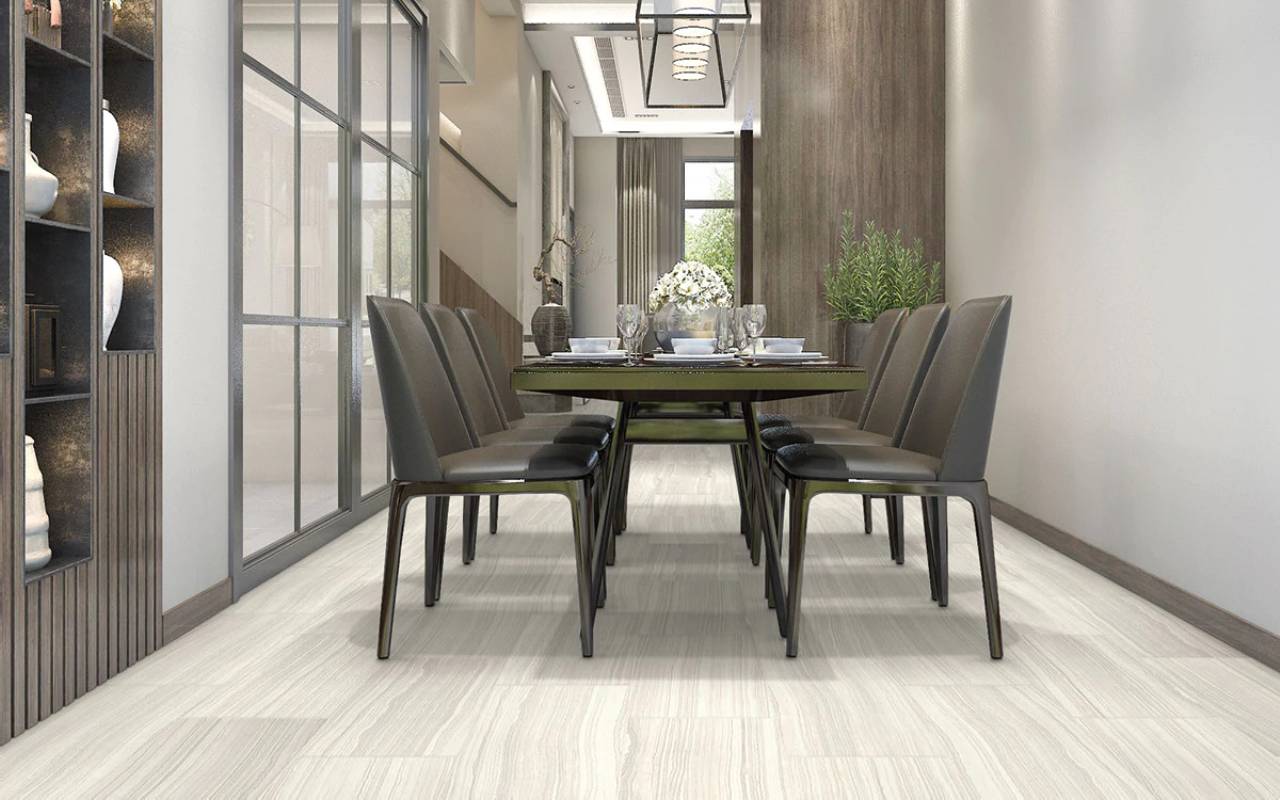
Patterns
If you are interested in a different pattern idea for your flooring, we hope this information helps explain the differences. The pattern used when installing a new floor can add a completely new dimension to your space. In the image above you can see the four different patterns that are most common, Herringbone, Chevron, Plank, and the options with Tile. There are certainly more patterns that you could choose like a Parquet, Basket Weave, or Picture Frame pattern, but these are less common and usually extremely expensive to cut and install.

Herringbone Pattern
Herringbone floors have a rich history as a traditional floor pattern across Europe. It can be done in several styles, with or without a border. This pattern is made from rectangular blocks of hardwood laid in a pattern which was thought to resemble the skeleton of a fish, which is how derived its name. It dates to the Roman empire when road engineers figured out that the crisscrossing pattern of interlocking paving stones compression and movement as traffic moved along the roads. The Herringbone pattern all starts with proper milling, more with a herringbone than with any other pattern. If herringbone pieces widths do not exactly add up – the pattern will be impossible to maintain.
Related Products

Chevron Pattern
The chevron pattern appears in some of the earliest art forms, including on pottery and rock carvings. Chevron flooring pattern originated in 17th century France, where it quickly became one of the most preferred types of floors in the palaces of the kings and nobility alike. A chevron pattern has pieces of wood set at a 45-degree angle, unlike a herringbone floor where the planks form 90-degree angles with each other. The ends of two planks of wood of equal size are cut on an angle and the ends of the wooden planks are cut at an angle too. A chevron pattern floor can be used in various types of homes or commercial premises.
Related Products

Plank Pattern
Plank pattern is the most widely used pattern for floors. Traffic patterns within a space are a good indication of the suggested direction of your plank floor. For instance, in a foyer, plank floors are traditionally installed in a vertical direction from the perspective of the front door, which creates a subtle invitation to enter your home. The grid or stacked band has all the vertical and horizontal points aligned. Brickwork Square has each row offset by half the width of the plank or tile. Staggered Brickwork has each row offset by one third the width of the plank. Diagonal is when the pattern is offset on a 45-degree angle and can be applied to the above patterns. The Flemish bond pattern is compromised of an alternating rectangle and square tiles.
Related Products

Tile Pattern
Tiled patterns are most commonly associated with square or rectangle pieces. This pattern style is most associated with Natural Stone or Ceramic/Porcelain tiles. Several variations can be applied to give your floors a unique look depending on the desired result. The grid or stacked band has all the vertical and horizontal points aligned. Brickwork Square has each row offset by half the width of the plank or tile. Staggered Brickwork has each row offset by one third the width of the plank. Diagonal is when the pattern is offset on a 45-degree angle and can be applied to the above patterns. The Flemish bond pattern is compromised of an alternating rectangle and square tiles.


